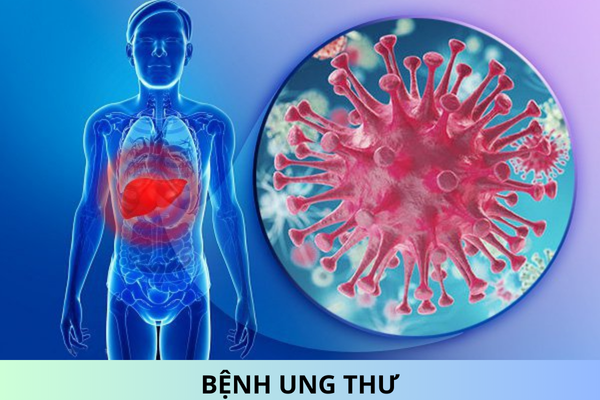What are regulations on brucellosis regarding the Prevention of Terrestrial Animal Diseases in Vietnam?
What are regulations on brucellosis regarding the Prevention of Terrestrial Animal Diseases in Vietnam? How to prevent brucellosis regarding the Prevention of Terrestrial Animal Diseases in Vietnam?
Thank you!
What are regulations on brucellosis regarding the Prevention of Terrestrial Animal Diseases in Vietnam?
Pursuant to Section 1, Appendix 20 issued together with Circular 07/2016/TT-BNNPTNT stipulating as follows:
1. Introduction to brucellosis
1.1. Disease concept
a) Bucellosis is an infectious disease common to many species of livestock and humans. The disease often occurs in the process of inflammation, necrosis in some internal organs, genital tract and then spread to the placenta causing miscarriage. Pathogenic bacteria are divided into 3 main groups:
- Bucella abortus causes disease in cattle;
- Brucella suis causing disease in pigs;
- Bucella melitensis causes disease in goats and sheep;
There are also Bucella ovis that infect only sheep, Brucella cannis that infects dogs, and some strains of bacteria that cause disease in other species.
b) Bacterial resistance: At room temperature, bacteria survive for 4 months in milk, urine and wet soil. At a steaming temperature of 70°C for 30 minutes. Common disinfectants such as: phenic acid, 4% formaldehyde, 5% lime water can kill bacteria after 1-2 hours.
1.2. The source of the disease and the route of transmission
a) Species infected: Animals infected with Infectious Miscarriage are goats, sheep, cows, buffaloes, pigs, dogs, wild animals and humans. Birds and mice carry diseases.
b) Disease source: In disease-carrying offspring, bacteria are abundant in the placenta, amniotic fluid, mucus and vaginal mucus, and milk; In males, bacteria are abundant in semen. Most of the internal organs such as blood, liver, spleen, bone marrow, and testicles contain large amounts of bacteria. In the blood, bacteria appear from time to time, most often when cattle give birth or have a miscarriage. In a miscarriage like a gestational sac, the fetal viscera have a lot of bacteria.
c) Transmission route
- Direct transmission: Through the digestive tract due to food, drinking water contaminated with pathogenic bacteria or by breastfeeding; sexually transmitted by mating, fertilization and genital fluid; through the skin, mucous membranes and open wounds; Through inhalation by inhalation of dust carrying bacteria, direct transmission. Prematurity, amniotic fluid, and placenta are the main sources of transmission of B.abortus in cows and B.melitensis in goats and sheep while epidemics and miscarriage are the main sources of transmission of B.suis and B. Cannis.
- Indirect transmission: Through livestock equipment carrying the disease. Insects can also transmit diseases and harbor pathogens in swarms. Flies transmit disease through feces.
1.3. Symptom
a) Symptoms in cows: Cows often get sick from B.abortus strains, in addition, they can also get diseases from B.suis and B. Melitensis strains. The incubation period is from 1 week to 7 months, in some cases only 72 hours.
- Infected cows mainly occur in the 5th, 6th, and 7th month pregnant females. Cows have a phenomenon like about to give birth: red, swollen vulva, viscous water, tight breasts, butt collapse. Beef fever but not high, sedentary. The fetus may die before or after a miscarriage, there is a phenomenon of the fetus being wrapped or close to each other, the amniotic fluid is cloudy, dirty, has no smell but the placenta is white.
- The symptoms of bulls are more obvious: the testicles are 2-3 times more red and swollen, after 2-3 days, the testicles will cool down and begin to atrophy, after the animal has a fever and stops eating. Sperm quality decreased significantly, the rate of malformed sperm increased, semen changed from milky white to yellowish. The animal is lazy to exercise, prefers to lie down or stand in one place, and refuses to eat.
- Both bulls and cows have arthritis: hip, pelvic (female) and knee (male). Swollen joints, crooked joints make it difficult for cows to walk, joints feel soft, there is a lot of inflammatory fluid.
b) Symptoms in goats and sheep: The disease is usually caused by B. Melitensis strain, in sheep it is also caused by B. Ovis. The incubation period is from 2-18 weeks. The characteristic symptom is that the animal has a miscarriage. One week before the miscarriage, the animal had a high fever, fatigue, weight loss, stopped eating, drinking a lot of water, mastitis, lying in one place, did not like to exercise. Goats have vaginitis, vulvovaginitis, oily discharge. Rams have bull-like symptoms, testicular inflammation. If sheep are infected with B. Ovis strain, there is chronic arthritis, epididymitis and neurological symptoms.
c) Symptoms in pigs: The disease is usually caused by Brucella suis strain, the incubation period is from 2-18 weeks. The sow was miscarried, the whole fetus was born. Pigs have diarrhea, hydrocephalus of the nipples, fatigue, anorexia, anorexia. Miscarriage is usually at 4-12 weeks. When aborting, pigs have hind leg paralysis, arthritis, after 10-15 days recover. Males have inflammation of the testicles.
1.4. Sickness
a) In the fetus of aborted animals: The fetal sheath is thickened, with many bleeding spots and covered with a viscous, dirty fluid. Amniotic fluid is dirty, cloudy, with blood and pseudomembranous membranes. On the nipple, there are many necrotic spots, swollen, black, soft. Placenta has yellow-white granular necrosis spots, opaque surface. The umbilical cord has pus, spots of necrotic spots. The liver, spleen, and kidneys of the fetus are inflamed, hemorrhagic and necrotic.
b) In females: The mammary glands are inflamed and swollen. On the thin skin of the udder, there are gray-white necrotic spots, the milk is yellow.
c) Males: The epididymis is swollen 2-3 times larger than normal, the outer genital tract is thick, sometimes arthritis is soft with pus, the synovial sinus has a lot of mucus, turbidity, and a little comparison. In the post-testicular stage, the testicles atrophy, with scattered necrotic granules.
d) Visceral organs: Liver and spleen are swollen or necrotic.
How to prevent brucellosis regarding the Prevention of Terrestrial Animal Diseases in Vietnam?
Pursuant to Section 2, Appendix 20 issued together with Circular 07/2016/TT-BNNPTNT stipulating as follows:
2. Prevention
Mainly apply preventive hygiene measures. Vaccination shall be carried out according to the guidance of the veterinary authority.
Best regards!











